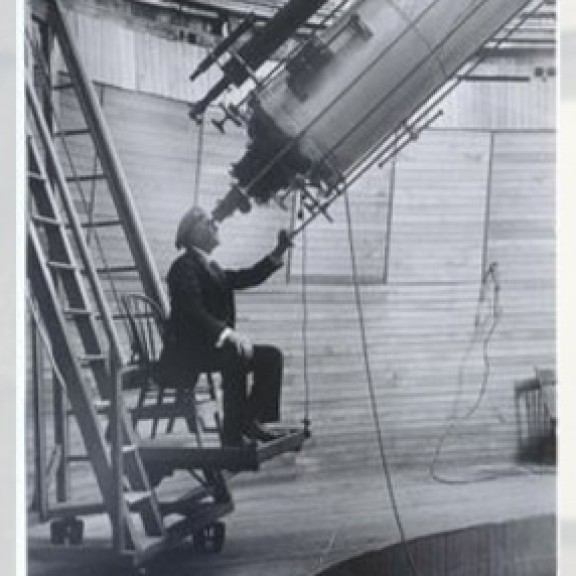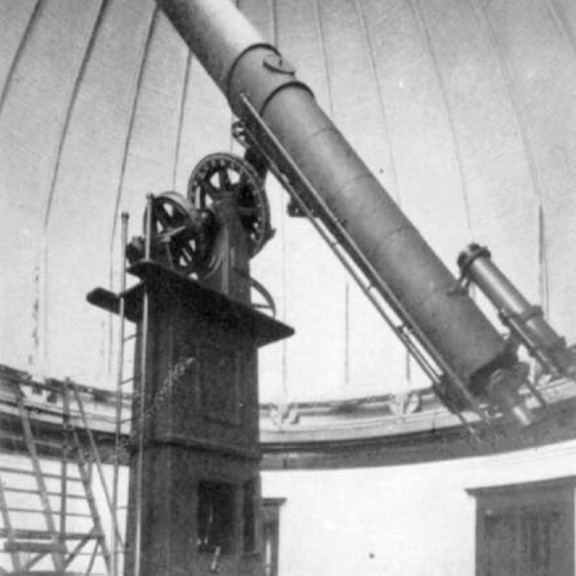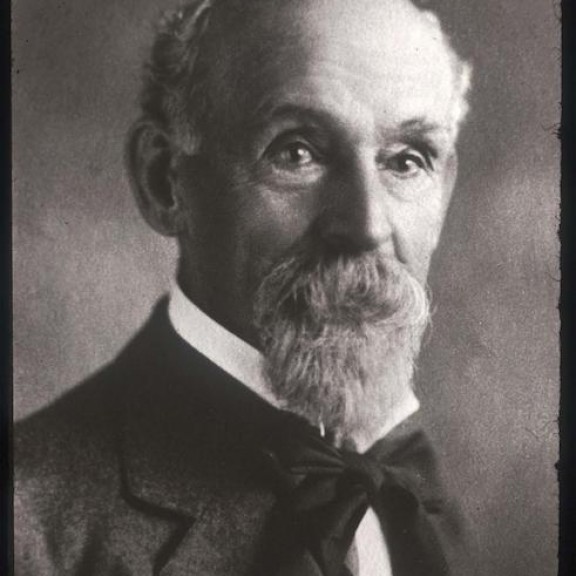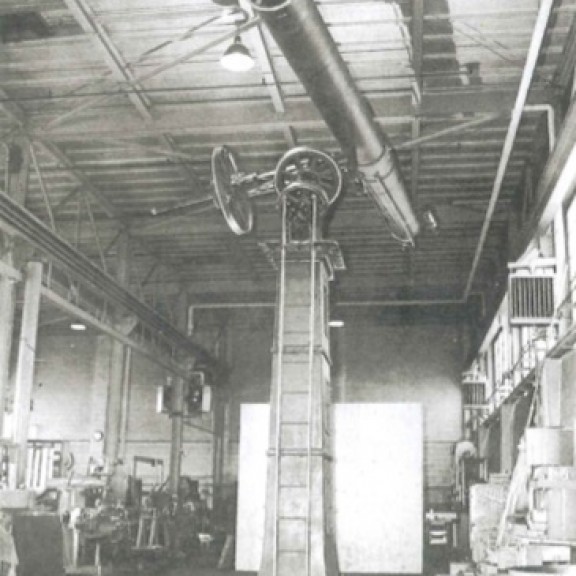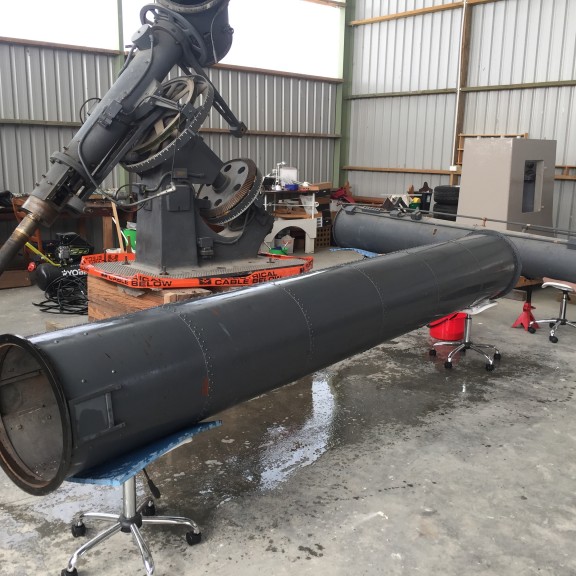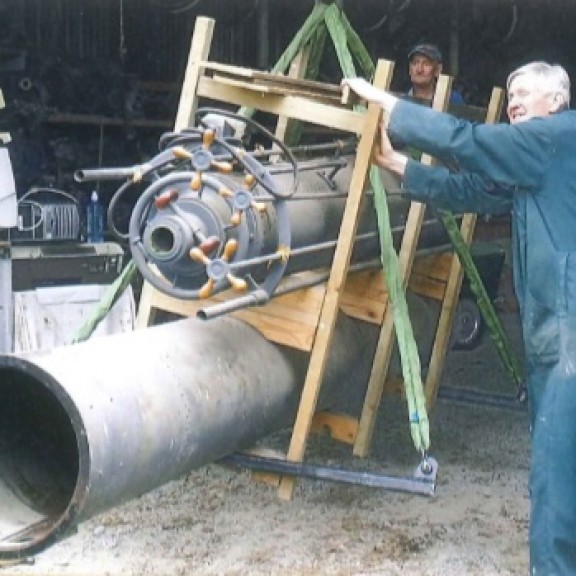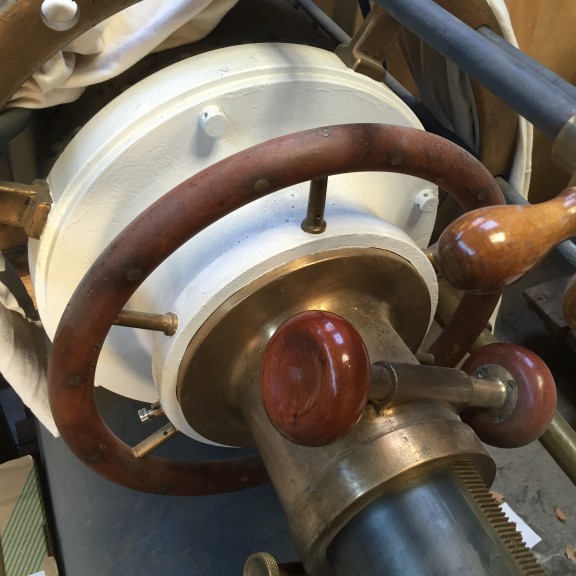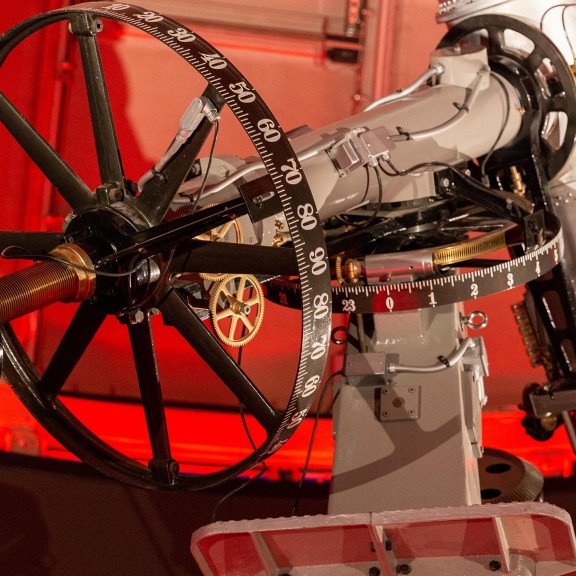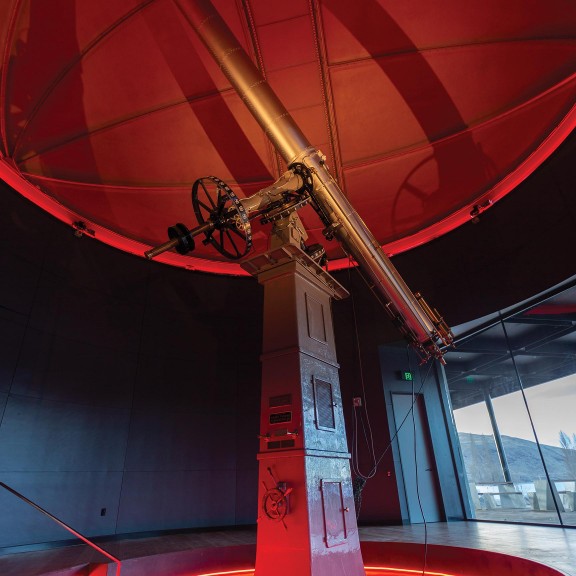A True Masterpiece
A marvel, beautifully crafted of brass, iron, steel and wood, the Brashear Telescope stands nine meters tall and has an 18-inch refracting lens. As one of the most important telescopes of its era, this masterpiece of Victorian engineering deserves and has found a special home.
The Brashear Telescope is one of the world’s most famous Victorian telescopes. The 18-inch refractor lens was created in 1894 by renowned Pennsylvanian Optician, John Brashear and was leased to the famous astronomer Percival Lowell to observe the 1894-1895 Martian Opposition at the Lowell Observatory in Arizona. During Percival Lowell’s studies of Mars, he famously used the instrument to observe sunlight reflected off the Martian polar icecaps.
In 1896, immediately after Lowell’s use, the University of Pennsylvania purchased the lens and fitted it into an eight-metre-long tube atop a 5.4-metre high pier and equatorial mount fabricated by the illustrious Warner & Swasey Co. of Cleveland, Ohio. The telescope was then installed in a ten-metre diameter dome at the Flower Observatory, owned by the University of Pennsylvania.
For over half a century, this extraordinary piece of equipment produced a multitude of valuable research data and became hugely important in the history of astronomy. The Brashear Telescope was also used by Walter Leight in his early examinations of Saturn, where Leight first observed sub-divisions in Saturn’s rings.
The Journey to Aotearoa
The Flower Observatory closed in 1954 and the Brashear Telescope was dismantled and placed into storage. In 1962, the University of Pennsylvania began exploring a Southern Hemisphere astronomy programme and so the telescope arrived in New Zealand and to Takapō in 1963 in a partnership with the University of Canterbury (UC). This partnership resulted in the establishment of the Mt John Observatory, but unfortunately for the Brashear, there were insufficient funds to build a dome suitable to house the nine meters tall telescope and it was resigned again to life in storage.
In 2016, UC gifted the telescope to the Tomorrow’s Skies Charitable Trust to enable the long-held dream of restoration to be realized. It would also be part of a wider community outreach programme developed and executed by the Dark Sky Project team.
All visitors to Dark Sky Project base can view the impressive telescope when they visit, and the Dark Sky Experience includes the ability to get up even closer and learn more with a guided tour.
Restoring a Legacy: Thank You to the Brian Mason Trust Fund
The restoration of our historic Brashear Telescope is a testament to preserving knowledge, heritage, and inspiration for future generations. We are profoundly grateful to the Brian Mason Trust Fund for their generous contribution of $100,000 toward this restoration.
The Brian Mason Trust Fund, founded in honor of pioneering geologist Brian Mason, champions projects that promote education, knowledge, and the celebration of our natural world. The Brian Mason Trust Fund enabled us to restore the Brashear Telescope’s original craftsmanship and historical value. Today, this beautifully restored instrument continues to inspire countless visitors, bridging the past and the present as it stands proudly in our observatory.
We extend our heartfelt thanks to the Brian Mason Trust Fund for their lasting contribution to this project, which has helped foster a deeper connection to our universe here in Aotearoa.

